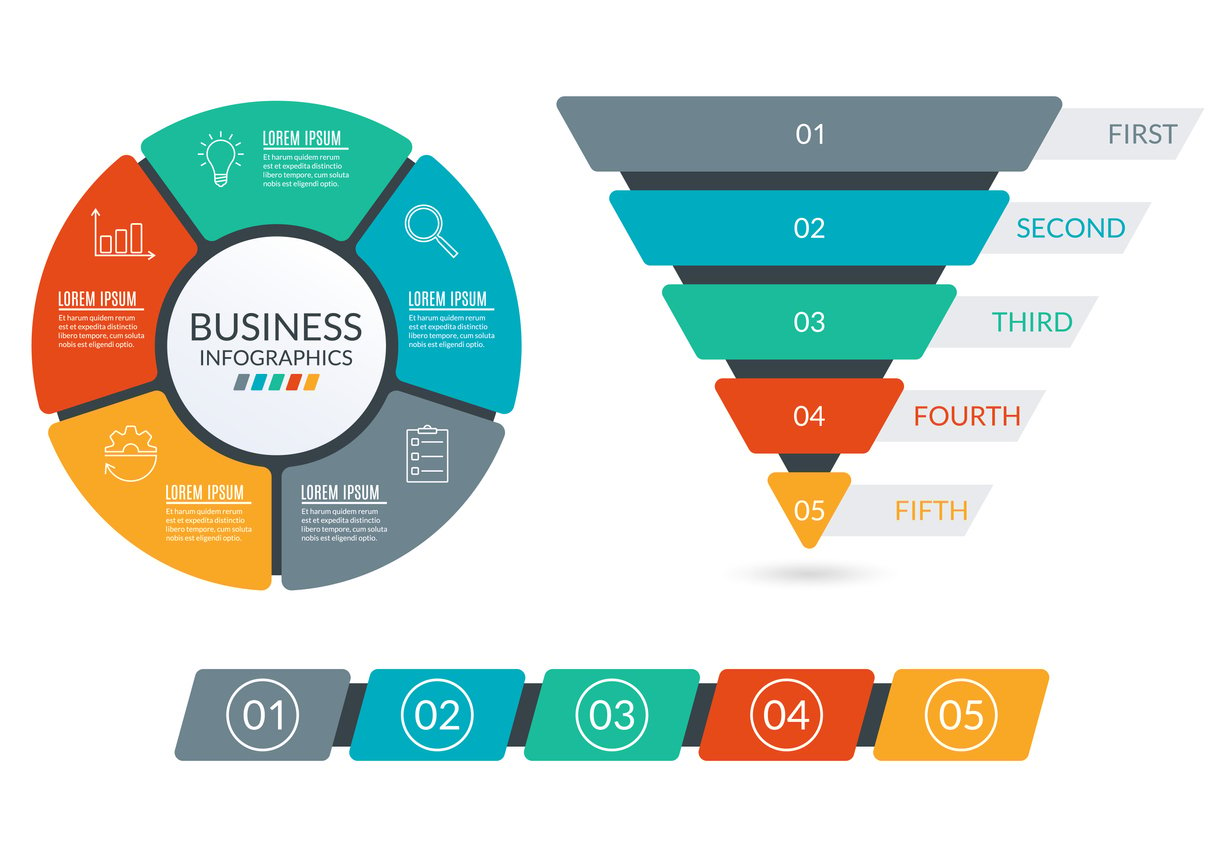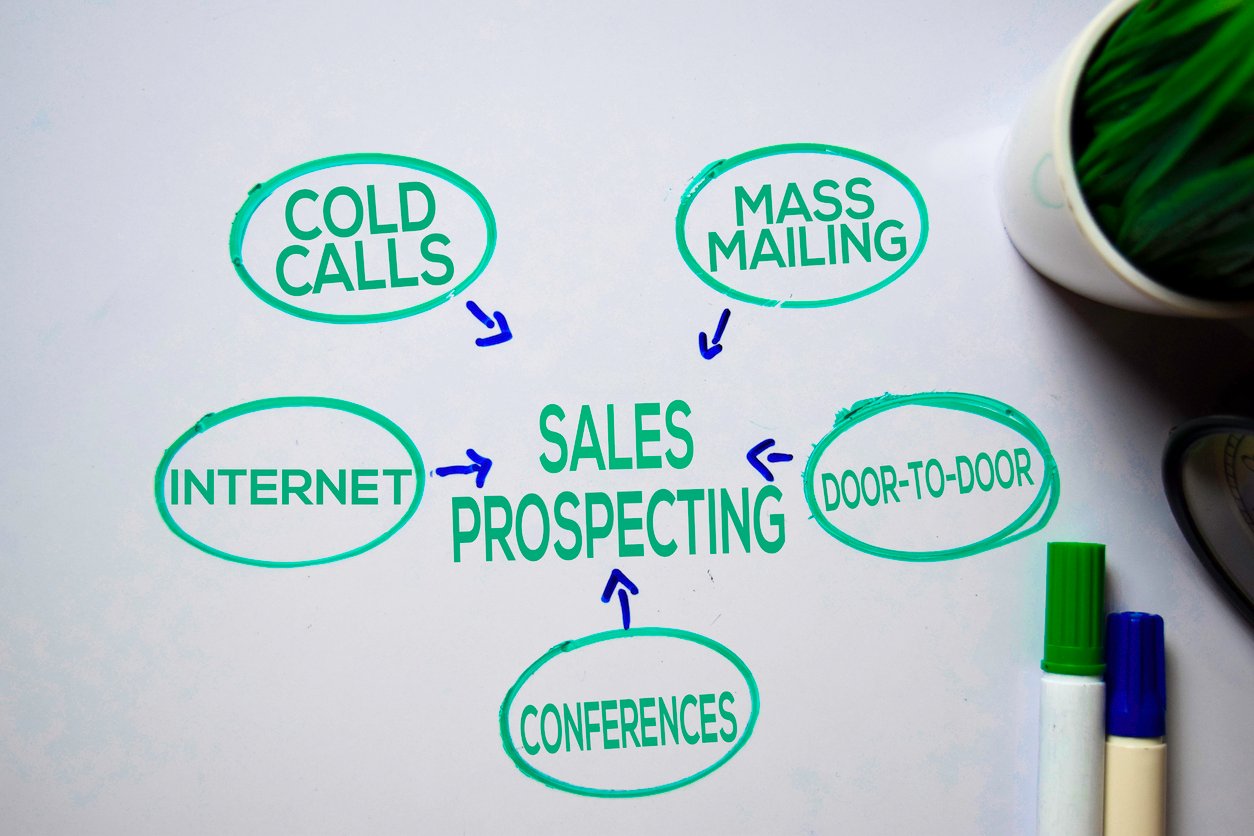
Effective Customer Retention Strategies for Various Industries
 Updated on
Updated on
 By Carlos Correa
By Carlos Correa
Carlos Correa
Carlos has been involved in the sales space for well over ten years. He began in the insurance space as an individual sales agent, managing teams as s...
learn more
Carlos Correa
Carlos has been involved in the sales space for well over ten years. He began in the insurance space as an individual sales agent, managing teams as s...
Table of Contents
Table of Contents
Welcome to the world of customer retention strategies, where the phrase "love 'em and leave 'em" is frowned upon and "keep 'em coming back for more" is the name of the game. As a business owner or marketer, you know that acquiring new customers can be an expensive and time-consuming process. But what if I told you that retaining your existing customers is not only more cost-effective but also crucial to the long-term success of your business?
This article will explore some of the most effective strategies for retaining customers, from personalized marketing campaigns to loyalty programs and beyond. But before we dive into the details, let's take a step back and appreciate the art of customer retention strategies.
What Are Customer Retention Strategies?
Customer retention means existing customers stay loyal to an organization, brand, or product. It’s critical for any company, as retaining current clients is easier and more cost-effective than acquiring new ones.
Customer retention strategies are enterprises' techniques, sales processes, and approaches to improve client loyalty and lifetime value. Increased revenue and profitability are the primary benefits of using customer retention strategies to enhance engagement.
Customer retention strategies aim to create an emotional connection between the customer and the company. This can be achieved through various methods, such as providing excellent customer service, offering loyalty programs, personalized marketing, and continuously improving the product or service quality.
The following table provides an overview of common customer retention strategies with their advantages and disadvantages:
|
Customer Retention Strategy |
Advantages |
Disadvantages |
|
Provide Excellent Customer Service |
Allows sales teams to build stronger relationships and improve customer satisfaction |
May require additional resources and training for customer support teams |
|
Offer Loyalty Programs |
Encourages repeat purchases while enhancing customer loyalty |
Can be expensive to implement and maintain |
|
Create Personalized Marketing |
Marketing divisions can tailor business messaging to customer preferences, increasing |
Requires customer data analysis and may raise privacy concerns |
|
Continuously Improve Product or Service Quality |
Enhances customer satisfaction and loyalty, increasing competitiveness |
Requires ongoing investment in research and development |
|
Engage with Customers |
Helps builds customer loyalty and enhances brand reputation |
May require a significant investment in social media and other communication channels |
Customer retention can help businesses succeed and customer retention strategies are vital for achieving this objective.
An organization may forge close bonds with its consumers while boosting sales and profitability by giving top-notch customer service, loyalty programs, tailored marketing, and constantly enhancing the quality of its goods or services.
It is important to note that customer retention strategies should be tailored to the specific needs and preferences of the customer base to ensure their effectiveness.
Importance of Customer Acquisition and Retention Strategies

Customer acquisition and retention strategies are essential for any enterprise looking to grow and succeed in a competitive market. Both approaches are necessary for their own purpose while working collaboratively to create a sustainable and profitable business model.
Here are some reasons why customer acquisition and retention strategies are crucial:
- Revenue Growth: Acquiring new customers is necessary for revenue growth. However, retaining existing customers is much cheaper than obtaining new ones. According to research, attracting a new customer may cost up to five times more than retaining an existing one. Therefore, balancing both customer acquisition and retention strategies helps ensure consistent revenue growth.
- Increased Customer Lifetime Value: Customer lifetime value (CLV) is the amount of money a buyer spends with a company over their whole lifetime. Long-term client retention may raise a company's CLV. Customers loyal to a firm will likely make more purchases and promote it to others, boosting earnings and profit.
- Brand Loyalty: Building brand loyalty is the epicenter of any business. Customers loyal to a brand are more inclined to choose it over competitors, even if its prices are higher. Loyal clients also tend to defend the company against negative feedback or recommend it to others, leading to more buyers and increased revenue.
- Competitive Advantage: In a crowded marketplace, businesses must stand out. By implementing effective customer acquisition and retention strategies, businesses can create a unique selling proposition that differentiates them from competitors.
- Customer Feedback: Retaining customers also allows for valuable feedback on products or services. Listening to customer feedback helps businesses improve their solutions, increasing customer satisfaction and loyalty.
Customer acquisition and retention strategies should be the primary focus of any business looking to expand. Organizations can increase revenue, customer lifetime value, and brand loyalty by implementing customer retention strategies to gain a competitive advantage.
Benefits of Customer Retention Strategies

Cost-Effective
One of the most incredible benefits of customer retention strategies is that they are cost-effective.
Retaining existing customers is significantly cheaper than procuring new ones.
According to Business News Daily, increasing customer retention rates by just 5% can increase profits by up to 95%. This is because retaining clients requires less investment in marketing and advertising than attracting new ones. Moreover, loyal customers will probably purchase from a business again, increasing their lifetime value to the company.
Improved Customer Satisfaction
Implementing customer retention strategies leads to improved customer satisfaction. By keeping existing customers happy and engaged, companies can identify issues while addressing them timeously.
Brand loyalty and customer satisfaction increase significantly when customer retention strategies are incorporated correctly.
With many satisfied customers, they’ll promote your business to others, attracting more clients through word of mouth or other social channels.
Enhanced Brand Reputation
Customer retention strategies enhance a company's brand reputation.
Loyal clients often leave positive reviews and testimonials, influencing new buyers to check out the business.
Additionally, organizations can build a trustworthy reputation by providing superior customer service and support, attracting new clients while generating more revenue.
Increased Revenue
Customer retention strategies generate more revenue.
As mentioned, retaining existing clients requires far less financial outlay than keeping current ones. Also, loyal customers purchase more frequently or market the business to friends and family regularly.
With customer retention strategies, companies can increase their CLV and generate more revenue by engaging existing clients.
Competitive Advantage
Customer retention strategies provide a competitive advantage. Businesses stand out from rivals by developing a devoted consumer base and keeping them happy.
This is crucial for companies operating in highly competitive markets.
Long-term success is achievable for businesses that retain consumers and deliver exceptional customer service.
Data Collection and Analysis
Implementing customer retention strategies assist in gathering valuable data for analysis.
Companies can find areas for improvement and target their marketing initiatives to match client demands by monitoring customer behavior and preferences.
This results in improved marketing and product development, higher client retention rates, and more sales.
Customer Loyalty Programs
One popular customer retention strategy advantage is creating loyalty programs.
These reward programs offer bonus points or discounts to customers who make repeat purchases or engage with the business in other ways. Loyalty programs are an effective way to incentivize clients to remain loyal to a company while helping to increase retention rates.
Personalized Communication
The last customer retention strategy benefit is customized communication. Businesses may use consumer data to personalize their communications to specific clients or areas of interest.
This might include customized marketing, exclusive deals, and personalized interactions.
Customer connections are strengthened, and retention rates are increased through customized client correspondence.
Strategies for Customer Retention in Various Industries

Customer Retention Strategies in Services
Building solid client connections is essential for customer retention in the service sector.
One successful approach is offering individualized services suited to the client's demands. This may be done by looking at customer data to find trends in preferences and behavior.
For instance, a hair salon might keep track of each client's preferred hair color and style to make tailored recommendations to guarantee client happiness.
Offering a customer-centric service is another tactic.
Consumers are likely to patronize a firm if they feel valued and appreciated. It's crucial to respond to clients' questions and concerns as soon as possible and offer them a unique solution.
Customer Retention Strategies for Banks
Customer retention strategies in the banking industry is a recipe for long-term success.
An effective strategy is offering personalized financial advice and solutions tailored to the customer's needs. This can be accomplished by analyzing customer data to identify financial goals, spending habits, and investment criteria.
For example, a bank's customer retention strategies can offer custom investment advice based on a client's risk tolerance and investment goals. Additionally, banks can provide rewards and incentives for loyal customers, including lower interest rates on loans or credit cards, cashback rewards, or free financial advice sessions.
These incentives motivate clients to remain with the bank and raise their lifetime worth to the business.
E-Commerce Customer Retention Strategies
In the e-commerce industry, customer retention is challenging due to the industry's highly competitive nature.
Using SMS marketing with clients that have opted in is becoming increasingly common. Although text messages may have open rates of up to 98%, less than 15% of businesses employ SMS marketing to reach out to their clients.
Using this tactic, E-Commerce stores may maintain an advantage over their rivals.
Marketing teams can create a text message campaign that directs people to the business’s website using the appropriate digital marketing tools. Generally, they start by sending an email with a discount and an SMS shortcode.
Another strategy is to offer rewards for repeat customers, including free shipping, exclusive discounts, or early access to new products. With the excitement of getting something for free or at a reasonable price, customers will be frothing for more.
B2B SaaS Customer Retention Strategies
Growing a B2B SaaS company is no easy feat, and rightfully so.
Consumers have specific expectations while engaging in business, and meeting those expectations is important. B2B customer retention strategies focus on meaningful client interactions while resolving their issues and exceeding expectations.
Here are some examples of what customers could anticipate:
- Timely service provision
- Exceptional client service
- Reliable goods and services
- Solving of customer challenges
Clients may decide not to renew their membership with an organization if they don't live up to their expectations following a purchase.
For example, the consumer won't be prepared to continue paying for the service if the company says that the software speeds up a business process, but the customer still completes the work in the same amount of time.
Companies can keep SaaS clients by ensuring their solutions meet and exceed their needs through exceptional customer service, frequent updates, and open lines of communication.
By continually improving the product, B2B SaaS companies can demonstrate their commitment to providing value to their customers, increasing customer satisfaction and retention rates.
Best Customer Retention Strategies

Personalization
One of the most effective strategies for customer retention is personalization. Personalization refers to tailoring the customer experience to the individual needs and preferences of each client. Customization can be accomplished through various methods, including customer segmentation, data analysis, and targeted marketing campaigns.
An excellent way to personalize the customer experience is by offering recommendations based on client data. Businesses may give individualized product suggestions, discounts, and promotions catered to each consumer's unique requirements and tastes by examining customer activity patterns.
Customers may become more loyal and satisfied as a result of this.
Another way to improve the customer experience is by offering personalized customer service, including responding promptly to customer inquiries or complaints while providing customized solutions to their problems.
Businesses can demonstrate their commitment to customer satisfaction and build strong relationships by offering personalized customer service.
Communication
Communication is critical in customer retention strategies. Effective correspondence between both parties can build strong customer relationships and increase their loyalty to a business.
There are several ways that companies improve their communication with customers, including regular email newsletters, social media updates, and personalized follow-up emails.
Improving customer communication through email marketing campaigns helps bring the prospect closer to an organization. By sending regular emails and customer updates, businesses can inform leads about new products, services, promotions, or other important information.
Social media is also a great way to boost interactions with customers. Regularly updating social media profiles with business news or what’s happening around the office can show your client that you are indeed real people.
Social media can also help teams respond to customer inquiries and complaints, making it a fantastic way to solve problems immediately.
Loyalty Programs
We mentioned loyalty programs multiple times in this article, and for a good reason.
Loyalty programs reward customers for their loyalty to a business, increasing customer lifetime value and improving brand reputation. Several loyalty programs exist, including:
- Point-based
- Tiered
- Exclusive member programs
A point-based program is one of the most commonly used reward systems. This loyalty program allows clients to earn points for every product they buy, which can be redeemed for free products, discounts, or other rewards.
With this newfound incentive, customers will be tempted to make repeat purchases, increasing their loyalty to the brand.
Tiered programs reward the customer based on their dedication to the organization. Clients can unlock new benefits and rewards as they reach certain milestones or purchase more. A tiered structure offers more rewards to individuals at the top of the tier to reward loyalty and boost sales. Tiering is effective in promoting consumer involvement and engagement.
Lastly, exclusive rewards programs are exactly as the name suggests. Developing a specialized loyalty program without a strong discounted component is undoubtedly feasible.
So ensure you develop rewards and perks appropriate for your target audience. Do your customers appreciate getting information before the public? In exchange for their loyalty, give them first access to new items. Does your target market value originality? Let them exchange their points for exclusive, limited-edition things.
A loyalty program can be developed in various ways to seem exclusive. Analyze your target audience and personalize your exclusive program for them.
Customer Retention Strategies Examples
Netflix
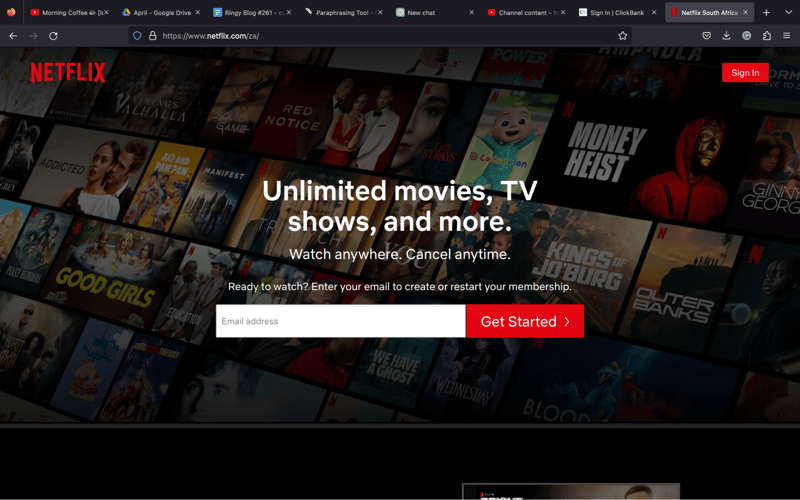
Using a sophisticated algorithm to personalize the user experience for each customer, Netflix suggests movies or series to its viewers. By analyzing user data, such as:
- Viewing history
- Search history
- Ratings
Netflix recommends movies and TV shows tailored to each customer's preferences, keeping customers engaged and returning to the platform. The company understands the importance of personalization, and the proof is in its ability to keep the watcher's attention.
Amazon
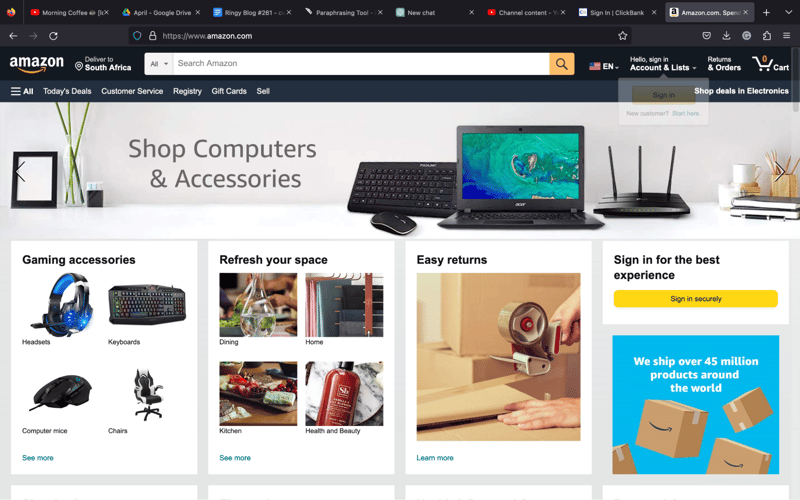
Amazon is another company that excels at personalization. Purchase history and browsing behavior are extracted from consumer data, which Amazon utilizes to recommend products suited to each customer's individual needs and preferences.
The organization has gotten good at offering the right products at the correct price, increasing cross-sell and repeat purchases.
Airbnb
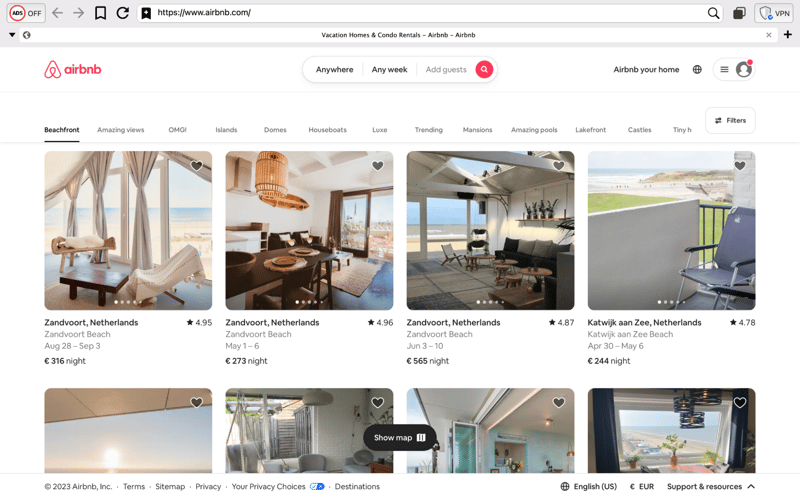
Airbnb uses email marketing campaigns to keep customers engaged and informed about new listings and promotions. Personalized emails based on customer data, such as location and travel preferences, form the foundation of Airbnb’s marketing campaigns. Airbnb can keep customers engaged and increase their likelihood of making repeat bookings with this customer retention strategy.
Starbucks
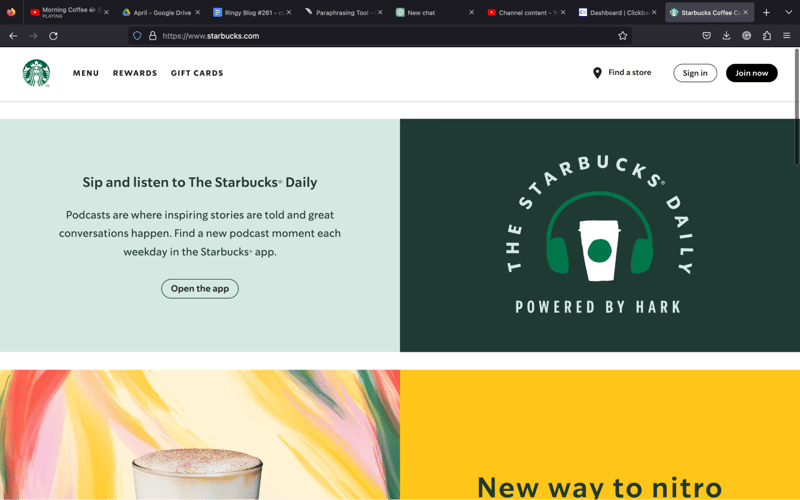
This enterprise utilizes its mobile app to keep customers engaged and up to date about the latest happenings. The Starbucks app allows patrons to place orders, pay for purchases, and receive rewards points, all while keeping them informed about upcoming products or promotions.
Sephora
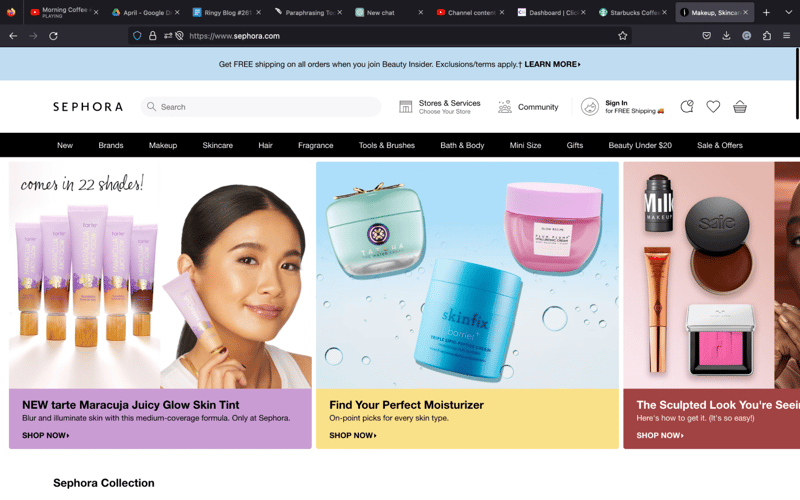
Sephora's Beauty Insider program rewards customers with points for every purchase. Patrons can redeem these points for free products, discounts, and other rewards. Sephora understands that incentivizing customers is a great way to get them to buy more products.
Southwest Airlines
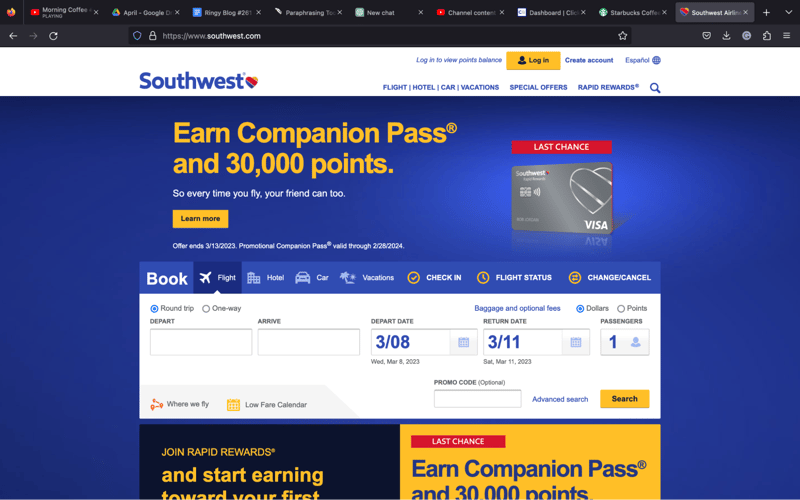
Southwest Airlines Rapid Rewards program rewards customers with points for every flight they take. Customers can redeem these points for free flights, upgrades, and other rewards, increasing their lifetime value to the organization.
Final Thoughts - Customer Retention Strategies
Customer retention is the bread and butter of any successful business.
Companies can adopt many customer retention strategies, from personalized communication to loyalty programs to keep their clients happy and returning for more. However, with so many methods out there, it can be overwhelming to know where to start.
Choose a customer retention strategy that fits your business and its target market. Try out the strategies mentioned in this blog to see which is the best fit. And don’t forget to invest in CRM software like Ringy.
Our innovative tool was developed to help businesses manage their customer relationships and improve retention rates. By using Ringy, companies can streamline their customer retention strategies and take their organization to the next level.
So, what are you waiting for?
Request a demo and see the difference it can make for your business!

Skyrocket your sales with the CRM that does it all.
Calling? Check. SMS? Check. Automation and AI? Check. Effortlessly keep in touch with your customers and boost your revenue without limits.

Take your sales to new heights with Ringy.
Sales in a slump? Ringy gives you the tools and flexibility you need to capture leads, engage with them, and turn them into customers.
Subscribe to Our Blog
Enter your email to get the latest updates sent straight to your inbox!
Categories
Related Articles











































